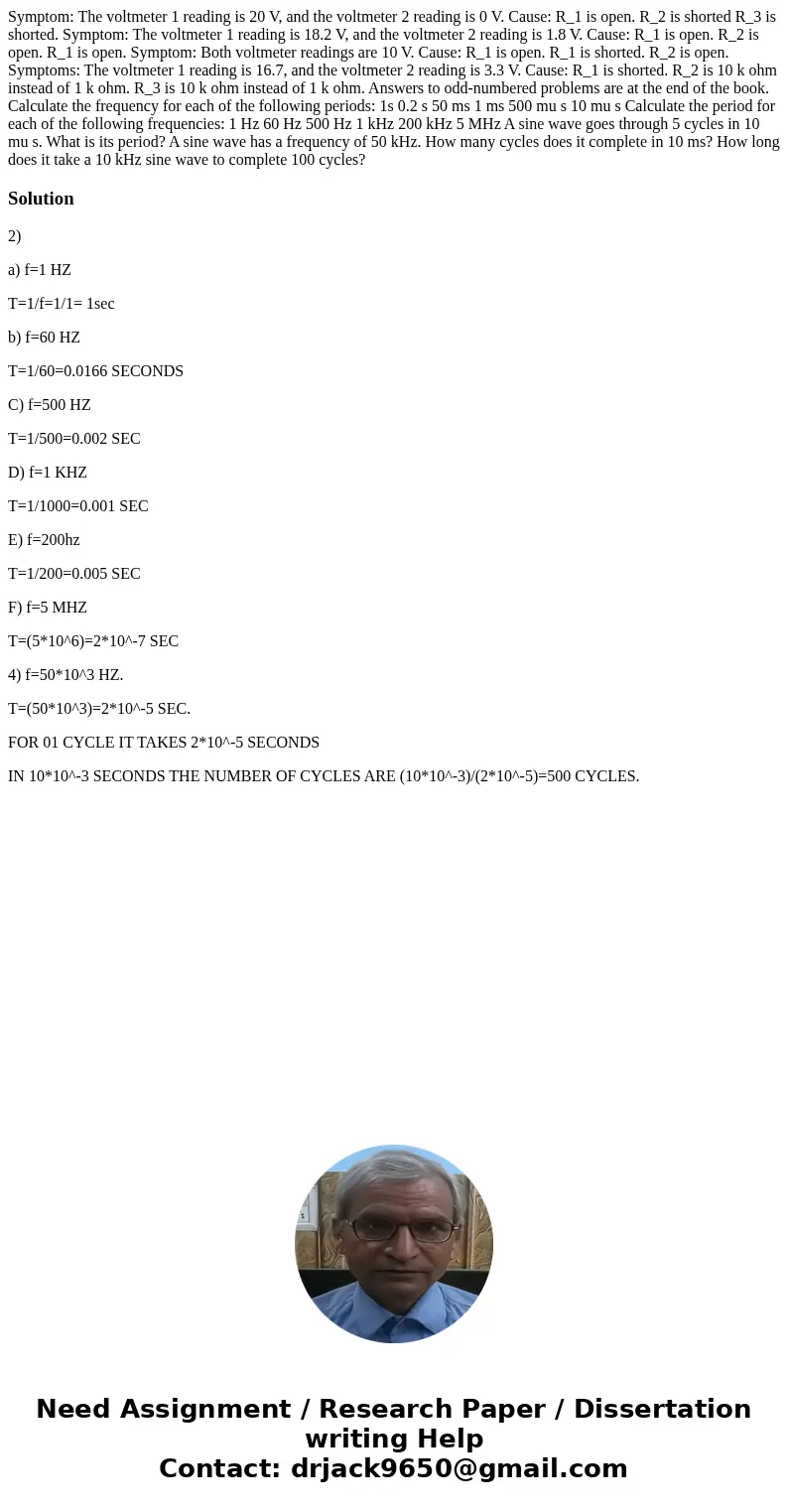Symptom The voltmeter 1 reading is 20 V and the voltmeter 2
Symptom: The voltmeter 1 reading is 20 V, and the voltmeter 2 reading is 0 V. Cause: R_1 is open. R_2 is shorted R_3 is shorted. Symptom: The voltmeter 1 reading is 18.2 V, and the voltmeter 2 reading is 1.8 V. Cause: R_1 is open. R_2 is open. R_1 is open. Symptom: Both voltmeter readings are 10 V. Cause: R_1 is open. R_1 is shorted. R_2 is open. Symptoms: The voltmeter 1 reading is 16.7, and the voltmeter 2 reading is 3.3 V. Cause: R_1 is shorted. R_2 is 10 k ohm instead of 1 k ohm. R_3 is 10 k ohm instead of 1 k ohm. Answers to odd-numbered problems are at the end of the book. Calculate the frequency for each of the following periods: 1s 0.2 s 50 ms 1 ms 500 mu s 10 mu s Calculate the period for each of the following frequencies: 1 Hz 60 Hz 500 Hz 1 kHz 200 kHz 5 MHz A sine wave goes through 5 cycles in 10 mu s. What is its period? A sine wave has a frequency of 50 kHz. How many cycles does it complete in 10 ms? How long does it take a 10 kHz sine wave to complete 100 cycles?
Solution
2)
a) f=1 HZ
T=1/f=1/1= 1sec
b) f=60 HZ
T=1/60=0.0166 SECONDS
C) f=500 HZ
T=1/500=0.002 SEC
D) f=1 KHZ
T=1/1000=0.001 SEC
E) f=200hz
T=1/200=0.005 SEC
F) f=5 MHZ
T=(5*10^6)=2*10^-7 SEC
4) f=50*10^3 HZ.
T=(50*10^3)=2*10^-5 SEC.
FOR 01 CYCLE IT TAKES 2*10^-5 SECONDS
IN 10*10^-3 SECONDS THE NUMBER OF CYCLES ARE (10*10^-3)/(2*10^-5)=500 CYCLES.

 Homework Sourse
Homework Sourse